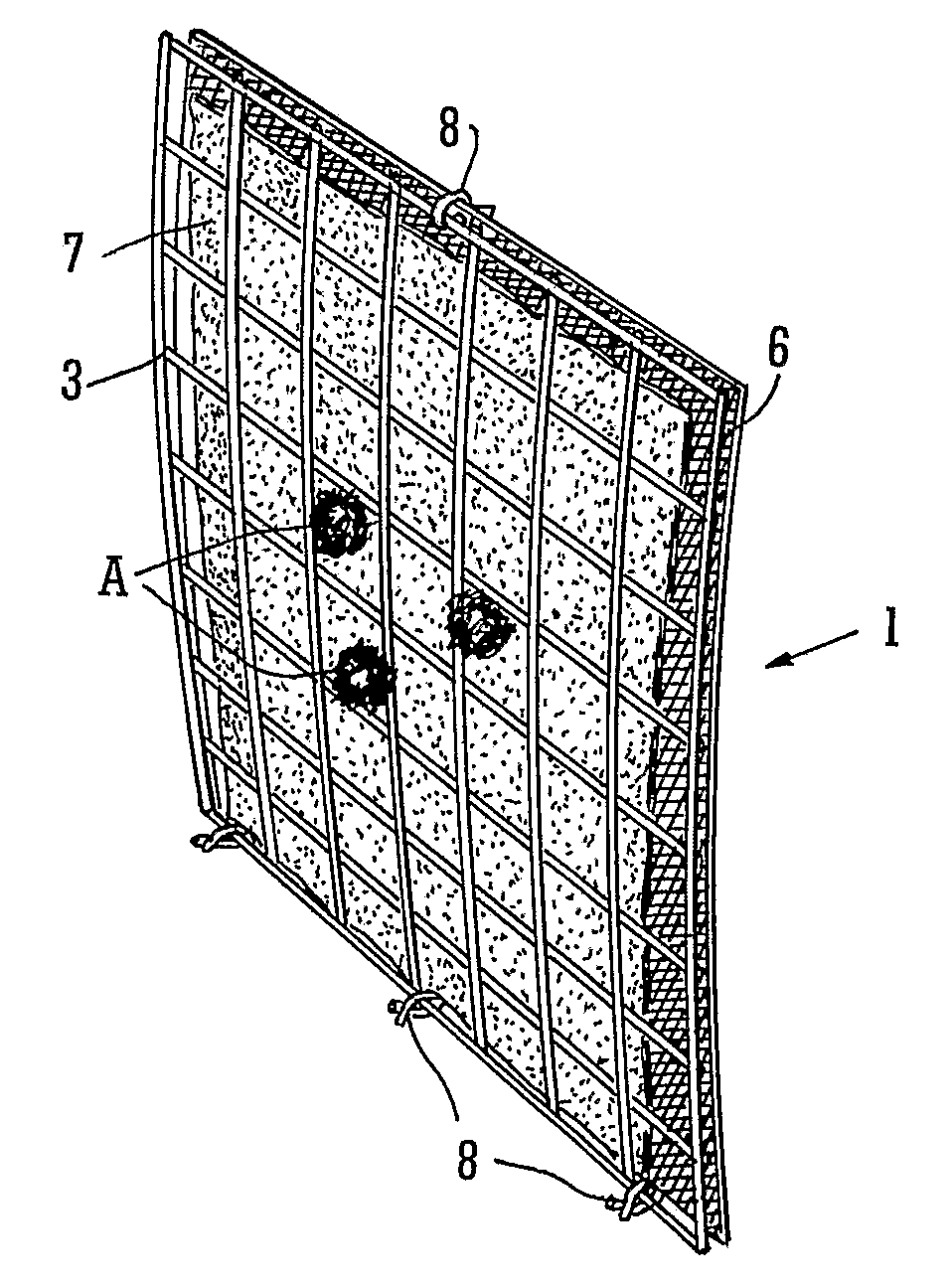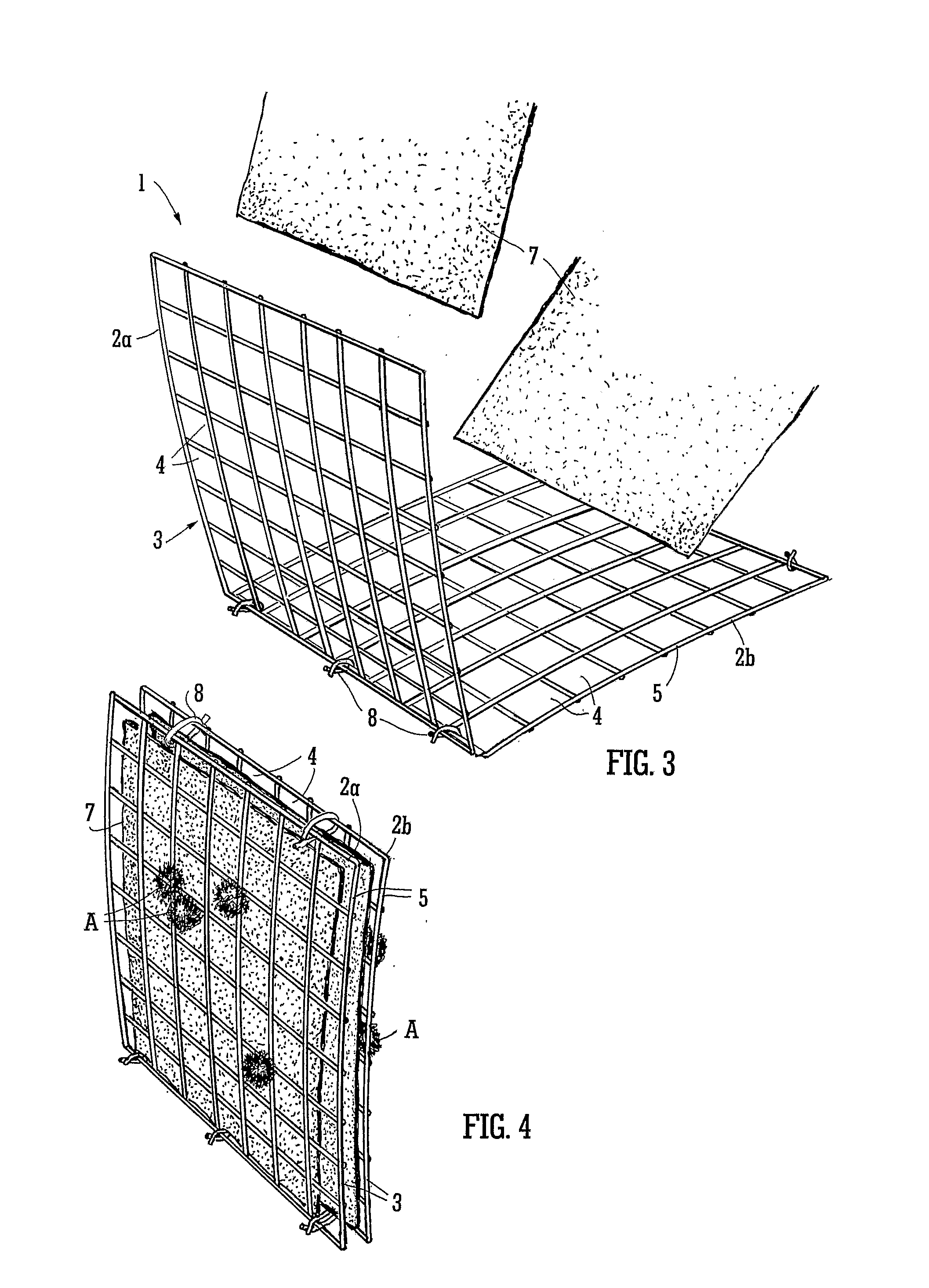Growing System for Aquatic Animals
- Summary
- Abstract
- Description
- Claims
- Application Information
AI Technical Summary
Benefits of technology
Problems solved by technology
Method used
Image
Examples
example 1
Construction of Cages
[0105]In this example, a version of the cage embodiment was constructed (see FIG. 7). It is an example of the types of marine-grade materials that can be used to construct the embodiments of this invention. Furthermore, it is an example of the use of different materials for different size animals.
[0106]A central cage structure was constructed from a single piece of PVC-coated stainless mesh (either 0.25-inch (6.35 mm) or 0.5-inch (12.7 mm) mesh size) measuring three inches (7.62 cm) or five inches (12.7 cm) width and 42 inches (106.68 cm) length. The mesh was bent into right-angles to form the perimeter of a hollow box (10.5 inches by 10.5 inches, (26.67 mm by 26.67 mm)) and the ends secured using stainless steel hog rings.
[0107]Cage structures constructed with 0.25-inch (6.35 mm) mesh size PVC-coated stainless steel and a width of three inches (7.62 cm) were used with sea urchins with a shell diameter of less than 20 mm (it was found that sea urchins smaller th...
example 2
Growing of Pre-Market Sea Urchins in Cages
[0115]In this example, juvenile sea urchins are grown in the cages for 16 weeks, demonstrating that sea urchins can feed and grow in the present invention. Juvenile sea urchins (of shell diameter of less than 15 mm) were chosen as they are the most sensitive to environmental stress.
[0116]In this example, sea urchins, of approximately 14 mm shell diameter, were maintained in the cages for 16 weeks at three different stocking levels (number of animals per cage): 40, 45, and 50 animals per cage. The experiment was performed in triplicate, that is three cages were used for each stocking level. Initially, and every four weeks thereafter, all the animals were sampled to determine the animal weight and shell diameter.
[0117]The feed used throughout the 16-week trial was freshly harvested fronds of the macroalgae Laminaria digitata. Feed was replenished every week and the amount inserted in each cage and that remaining after seven days was measured.
[...
example 3
The Use of Natural and Processed Diets for Growing of Sea Urchins
[0154]In this example sea urchins are maintained in cages for four months (16 weeks) and fed either a natural or an experimental artificial feed. The aim of this example is to demonstrate that both natural and artificial or processed feed preparations can be utilised with this invention.
[0155]Tank System and Water Quality Monitoring
[0156]As described for Example #2 above.
[0157]Cages
[0158]As the sea urchins utilised in this example have a test diameter in the range of 20 to 40 mm, the cage structures were three inches in width and constructed using 0.5 inch mesh size PVC-coated stainless steel.
[0159]Sea Urchins
[0160]Sea urchins (European sea urchin, Paracentrotus lividus) were sourced from a commercial sea urchin hatchery (Dunmanus Seafoods Ltd., Co. Cork, Ireland). Upon delivery the animals were allowed to acclimatise to the tank system for at least seven days with no feed previous to placement in the cages and initiat...
PUM
 Login to View More
Login to View More Abstract
Description
Claims
Application Information
 Login to View More
Login to View More - R&D
- Intellectual Property
- Life Sciences
- Materials
- Tech Scout
- Unparalleled Data Quality
- Higher Quality Content
- 60% Fewer Hallucinations
Browse by: Latest US Patents, China's latest patents, Technical Efficacy Thesaurus, Application Domain, Technology Topic, Popular Technical Reports.
© 2025 PatSnap. All rights reserved.Legal|Privacy policy|Modern Slavery Act Transparency Statement|Sitemap|About US| Contact US: help@patsnap.com



